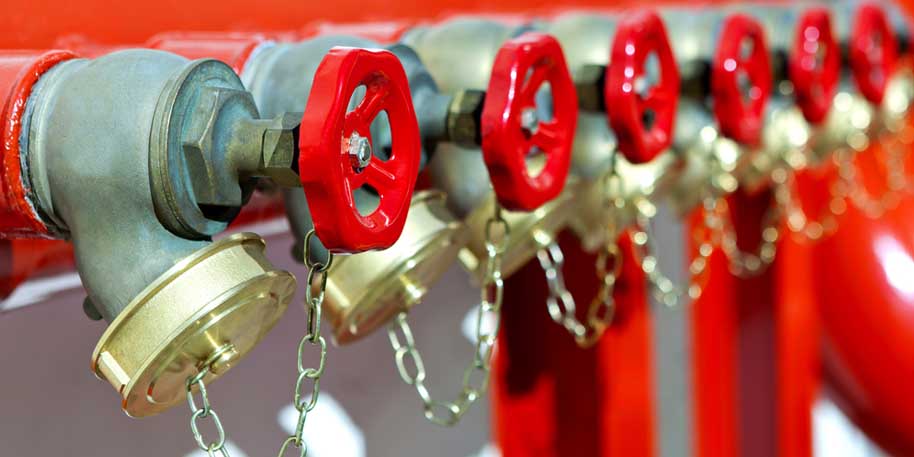Downtime is not an option for any data centre and the consequences of a network outage are enough to make even the most hardened owners and managers of these facilities break out in a cold sweat. While human error, power outages, cooling system failures and individual server issues are all high on the list of factors that can cause loss of uptime, fire is another well-recognised potential hazard.
Money matters
There's no shortage of evidence to demonstrate how downtime can be a phenomenally costly affair. When Amazon.com went offline for approximately 49 minutes in January 2013, it cost the company an estimated $4m in lost sales. Another outage in August of the same year lasted only 30 minutes, but still cost the company an estimated $66,240 for every minute that it wasn’t able to trade.
While this is an extreme example, regardless of the size of an organisation, the consequences of downtime should be avoided at all costs. While obviously inconvenient, it is the damage to data, equipment and organisational productivity, as well as legal and regulatory repercussions and reputational damage that can cause the most harm.
Just as worryingly, a 2014 report by SUSE, the leading German multinational open source software provider, found that while almost three-quarters of those polled said their organisation considered zero downtime a top priority, 17 per cent were yet to implement measures designed to accomplish this. With so many people using multiple devices to move data, any interruption to the organisation, routing and storage of this information is a potentially catastrophic event for those companies and consumers who rely on the Internet for their news, entertainment, shopping, and social media interactions.
Hot topic
In a typical year, two-thirds of all fires in commercial buildings start in power and climate control equipment, both critical elements of any data centre. However, providing effective fire protection in this type of environment poses some interesting challenges.
With ever-higher active equipment densities, efficient cooling is vital in keeping equipment within a manufacturer's specified temperature and/or humidity range. Research from DCD Intelligence, a division of DatacenterDynamics, found that the number of high-density cabinets and servers – those over 10kW per cabinet – as a proportion of total cabinets increased by 8.5 per cent globally between 2012 and 2013 to 15.2 per cent. This level of potential heat build up is only set to get higher and, according to the Data Center Users’ Group, density in 2025 will climb to 52kW per rack – a dramatic upswing that could radically change the physical environment of the data centre.
The effects of a fire can depend on its size, speed of development and location but regardless of its scale a fast alert and response is vital. That said, the data centre environment is not particularly well suited for traditional fire detection systems, as cabling often runs either under a false floor or above server racks – both difficult areas to protect for an automatic detection system. Furthermore, computer room air conditioning (CRAC) systems create very high airflows and the filters used by the units can remove smoke particles, again making smoke detection extremely challenging.
The answer
While the safety of people is obviously a priority, an early warning can also provide time to take corrective action and avoid damage to expensive equipment. Aspiration fire detection is the perfect solution for data centres, as it combines resilience, stability, a high degree of sensitivity, early event warning and minimal false alarms.
These systems comprise an enclosure, which houses the electronics that are powered from a supply, and a fan inside it that draws air in via pipes that are connected to the unit. The air that is drawn in then goes into an aspirating chamber after passing through a filter. In some state-of-the-art systems the air then passes across a dual source blue LED and infrared laser projected into the air itself and, if enough smoke particles are detected, an alarm condition is activated.
The ultra-high sensitivity of an aspiration fire detection system is the only practical technology to give the advanced warning time that is required in data centres. Over recent years significant advancements have been made in the development of this technology, so that it now offers an unrivalled ability to reduce the possibility of false alarms, which can be just as damaging and disruptive to data centre uptime as genuine fire. They include sophisticated filtration to deliver ultra-high sensitivity – as much as 0.0015%obs/m.
Remote control
Functionality is also enhanced through the use of remote interrogation and monitoring. Systems that utilise TCP/IP connectivity enable alerts to be automatically broadcasted by email, something that is of real benefit to data centre managers.
Modbus protocols are also embedded, enabling seamless integration with data centre infrastructure management (DCIM) systems without any additional hardware or software and delivering comprehensive communications with the fire control panel.
Raising standards
Aspiration fire detection systems have to be approved to EN54-20, a mandated product standard under the Construction Products Directive (CPD). A minimum sensitivity of 0.05%dB/m is defined and this is applicable where very early warning is required in enterprise critical applications such as data centres, where high levels of air conditioning and air dilution exist.
EN54-20 sets out a classification system for aspiration systems, defining Class A, B and C sensitivities. Unsurprisingly, data centres are firmly in the highest, Class A, category. The standard also addresses key concerns such as potential revenue loss due to downtime; avoiding smoke, fire and water damage; false alarms; preventing false discharge of extinguishing systems; and effective detection in very high air velocity environments.
Reliable and robust
Aspiration smoke detection systems are incredibly reliable and the way that they identify and react to smoke particles reduces the likelihood of false alarms – minimising the likelihood of unnecessary evacuations and avoiding downtime. This adds up to a solution that perfectly suits the specific needs of data centres and it should be considered for both new and retrofit applications.





